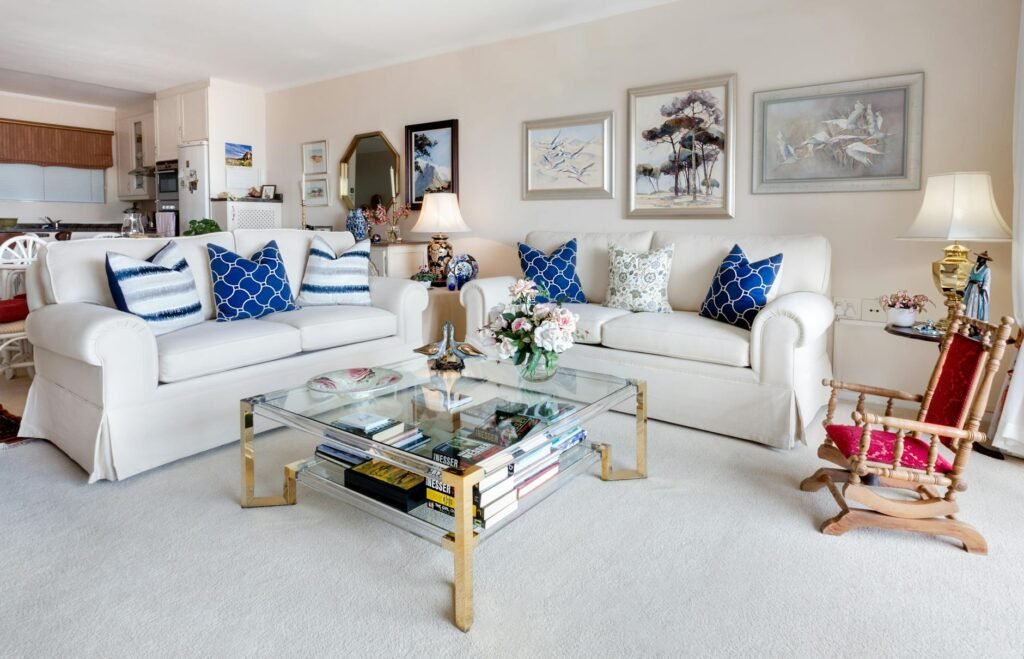Cleaning your home isn’t just about removing dust and grime—it’s about creating a space where your body can rest, your mind can breathe, and your family can thrive. After more than 15 years working as a professional home organizer and cleaning consultant, I’ve tested countless techniques, routines, and products.
In this article, I want to go beyond generic advice. I’ll share the best methods to clean your home that I personally use and recommend to my clients. These are tested in real homes, with real challenges—kids, pets, tight schedules, and all.
Let’s cut through the noise and focus on what actually works.
Start with a Foundation: Consistency Over Perfection
One of the most common mistakes I see is the belief that a “clean home” is the result of a single deep-cleaning session. It isn’t. A consistently clean home is built on small habits, daily attention, and the right tools and techniques.
Cleaning your home should feel sustainable, not overwhelming. That’s why the best methods are often the simplest—when applied with consistency and a bit of planning.
1. Top-to-Bottom, Left-to-Right: The Professional Cleaning Pattern
This is a method I teach in all my workshops and apply religiously in my own home. Cleaning from top to bottom ensures that dust, debris, and cleaner residue don’t fall onto surfaces you’ve already cleaned. Left to right prevents random jumping between areas and saves time.
Why it matters:
- Reduces rework and wasted effort
- Creates a clear, repeatable process
- Maximizes cleaning speed without sacrificing quality
Clients who adopt this method often tell me their cleaning time was cut in half—without sacrificing results.

2. Microfiber Cloths: A Non-Negotiable Investment
I cannot emphasize this enough: microfiber cloths outperform nearly every other material in cleaning efficiency. They trap dust and bacteria instead of spreading it, reduce the need for chemicals, and are safe on most surfaces.
Personal recommendation:
Invest in high-quality, color-coded microfiber cloths for different zones of the house (e.g., blue for the bathroom, yellow for the kitchen). Wash them weekly with hot water and no fabric softener to maintain performance.
Over the years, this one change has improved the quality and hygiene of my cleaning results more than any other product.
3. Vinegar and Baking Soda: Timeless and Trustworthy
Despite the ever-growing market of chemical-based and “eco-friendly” cleaners, white vinegar and baking soda remain two of the most effective natural cleaning agents.
I’ve used them in homes with children, elderly residents, and individuals with respiratory sensitivities—with excellent results and no adverse reactions.
Applications include:
- Kitchen sink drains: unclogging and odor removal
- Bathroom tiles: grime and mold treatment
- Refrigerator: safe, food-friendly surface cleaner
These substances are powerful, inexpensive, and environmentally friendly—qualities I value deeply in both professional and personal settings.
4. The True Role of Robot Vacuums
Robot vacuums are not magic. They are support tools—not replacements for manual cleaning. I began using them regularly around 2019, and while I still do, I only recommend them in combination with proper sweeping, mopping, and vacuuming schedules.
Pros:
- Excellent for maintaining clean floors between full cleans
- Ideal for pet owners or large households
- Time-saving
Cons:
- Cannot handle corners, edges, or stairs
- Require regular maintenance and setup
If you have a demanding daily routine, a robot vacuum can be a great ally—but never let it replace human judgment and thoroughness.
5. Steam Cleaning for Bathrooms and Kitchens
Steam cleaning changed the way I approach deep-cleaning jobs. Especially useful in bathrooms, kitchens, and tile grout, steam penetrates surfaces and kills bacteria without chemicals.
In my own home, I use a steam mop monthly for tile floors and a handheld unit for hard-to-reach areas.
Note of caution:
Never use steam on hardwood floors, unsealed surfaces, or delicate materials. Proper technique and understanding of your surfaces are key.
6. Focus on Decluttering Before Cleaning
This is one of the most overlooked aspects of home care. You cannot effectively clean a cluttered space.
I recommend my clients (and I do this myself) to declutter before every deep cleaning session. This means clearing surfaces, removing unnecessary items, and simplifying the space. Not only does this make cleaning easier, it significantly improves mental clarity and emotional well-being.
My personal system:
- Set a 10-minute timer per room
- Use three baskets: Keep, Donate, Discard
- Be honest—if you haven’t used it in a year, you probably don’t need it
Decluttering is not just about space—it’s about peace.
7. Create a Realistic Cleaning Schedule
Every home is different. I’ve worked in large estates, tiny apartments, homes with four dogs, and homes with newborns. There is no one-size-fits-all schedule, but here’s what I generally recommend:
Daily:
- Make beds
- Quick kitchen and bathroom wipe-down
- Tidy up visible clutter
Weekly:
- Vacuum and mop all floors
- Clean bathrooms thoroughly
- Dust surfaces
Monthly:
- Clean inside appliances (microwave, oven, fridge)
- Steam mop bathroom/kitchen
- Wash baseboards and door handles
Seasonally:
- Deep declutter closets and storage
- Wash windows and drapes
- Polish wood and furniture
A calendar-based approach avoids burnout and makes tasks more manageable.
Final Thoughts from Maria José
As someone who has worked in the home organization and cleaning field for over 15 years, I can confidently say that the best methods to clean your home are the ones rooted in habit, simplicity, and intention.
I’ve seen the difference that these practices can make not just in the state of the house—but in the lives of the people who live in it. A clean home isn’t about perfection. It’s about support, safety, health, and dignity.
Experience has taught me this:
- Clean with care, not rush.
- Choose quality over quantity in tools.
- Focus on routines, not marathons.
- And above all, remember that your home reflects how you feel—so give it the respect and attention it deserves.
